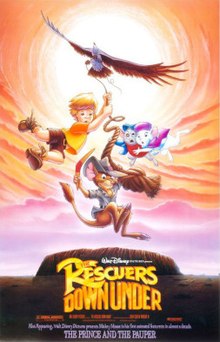
Goofy is an American cartoon character created by the Walt Disney Company. He is a tall, anthropomorphic dog who typically wears a turtle neck and vest, with pants, shoes, white gloves, and a tall hat originally designed as a rumpled fedora. Goofy is a close friend of Mickey Mouse and Donald Duck, and is Max Goof's father. He is normally characterized as hopelessly clumsy and dim-witted, yet this interpretation is not always definitive; occasionally, Goofy is shown as intuitive and clever, albeit in his own unique, eccentric way.
Modern animation in the United States from the late 1980s to the early 2000s is frequently referred to as the renaissance age of American animation. During this period, many large American entertainment companies reformed and reinvigorated their animation departments, following the dark age, and the United States had an overall profound effect on animation globally.
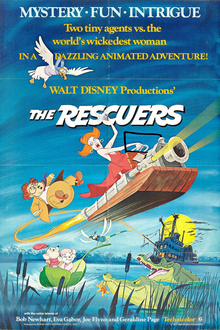
The Rescuers is a 1977 American animated adventure comedy-drama film produced by Walt Disney Productions and released by Buena Vista Distribution. Bob Newhart and Eva Gabor respectively star as Bernard and Bianca, two mice who are members of the Rescue Aid Society, an international mouse organization dedicated to helping abduction victims around the world. Both must free young orphan Penny from two treasure hunters, who intend to use her to help them obtain a giant diamond. The film is based on a series of books by Margery Sharp, including The Rescuers (1959) and Miss Bianca (1962).

The Little Mermaid is a 1989 American animated musical fantasy film produced by Walt Disney Feature Animation in association with Silver Screen Partners IV and released by Walt Disney Pictures. It is loosely based on the 1837 Danish fairy tale of the same name by Hans Christian Andersen. The film was written and directed by John Musker and Ron Clements and produced by Musker and Howard Ashman, who also wrote the film's songs with Alan Menken. Menken also composed the film's score. Featuring the voices of René Auberjonois, Christopher Daniel Barnes, Jodi Benson, Pat Carroll, Paddi Edwards, Buddy Hackett, Jason Marin, Kenneth Mars, Ben Wright and Samuel E. Wright, The Little Mermaid tells the story of a teenage mermaid princess named Ariel, who dreams of becoming human and falls in love with a human prince named Eric, which leads her to make a magic deal with the sea witch, Ursula, to become human and be with him.

The Great Mouse Detective is a 1986 American animated mystery adventure film produced by Walt Disney Feature Animation and released by Walt Disney Pictures. It is based on the children's book series Basil of Baker Street by Eve Titus and Paul Galdone, and was written and directed by John Musker, Dave Michener, Ron Clements, and Burny Mattinson in their feature directorial debuts. Featuring the voices of Vincent Price, Barrie Ingham, Val Bettin, Susanne Pollatschek, Candy Candido, Diana Chesney, Eve Brenner, and Alan Young, the film's plot follows Basil of Baker Street, a mouse detective who undertakes to help the young mouse Olivia find and save her father from the criminal mastermind and Basil's sworn enemy, Professor Ratigan.
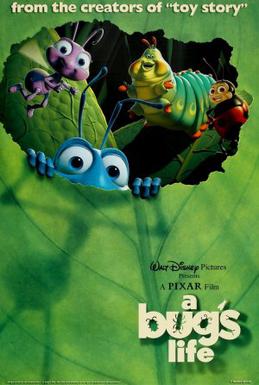
A Bug's Life is a 1998 American animated comedy film produced by Pixar Animation Studios for Walt Disney Pictures. It is Pixar's second feature-length film, following Toy Story (1995). The film was directed by John Lasseter, co-directed by Andrew Stanton, and produced by Darla K. Anderson and Kevin Reher, from a screenplay written by Stanton, Donald McEnery, and Bob Shaw, and a story conceived by Lasseter, Stanton, and Joe Ranft. It stars the voices of Dave Foley, Kevin Spacey, Julia Louis-Dreyfus, and Hayden Panettiere. In the film, a misfit ant named Flik, looks for "tough warriors" to save his ant colony from a protection racket run by a gang of grasshoppers. However, the "warriors" he brings back were a troupe of Circus Bugs. The film's plot was initially inspired by Aesop's fable The Ant and the Grasshopper.

Jeffrey Katzenberg is an American media proprietor. He was the chairman of Walt Disney Studios from 1984 to 1994, a position in which he oversaw production and business operations for the company's feature films. After departing Disney, he co-founded DreamWorks SKG in 1994, where he served as the company's CEO and producer of the Oscar winning film American Beauty and many of its animated franchises including Shrek, Madagascar, Kung Fu Panda, and How to Train Your Dragon until stepping down from the title in 2016. He has since founded the venture capital firm WndrCo in 2017, which invests in digital media projects, and launched Quibi in 2020, a defunct short-form mobile video platform which lost US$1.35 billion in seven months.

Runaway Brain is a 1995 American animated comedy horror short film produced by Walt Disney Feature Animation. Featuring Mickey Mouse and Minnie Mouse, the short centers on Mickey attempting to earn money to pay for an anniversary gift for Minnie. He responds to an advertisement to work for Doctor Frankenollie, only to find out that he is looking for a donor to switch brains with the monster he created. Featuring animation by animator Andreas Deja, it was first released in 1995 attached to North American theatrical showings of A Kid in King Arthur's Court and in 1996 attached to international theatrical showings of A Goofy Movie. It would be the final original Mickey Mouse theatrical animated short until Get a Horse! in 2013.
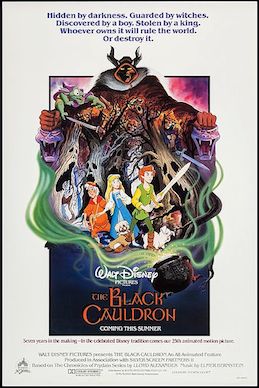
The Black Cauldron is a 1985 American animated dark fantasy adventure film produced by Walt Disney Productions in association with Silver Screen Partners II and released by Walt Disney Pictures. It is loosely based on the first two books in The Chronicles of Prydain by Lloyd Alexander, a series of five novels that are in turn based on Welsh mythology.

Walt Disney Animation Studios (WDAS), sometimes shortened to Disney Animation, is an American animation studio that creates animated features and short films for The Walt Disney Company. The studio's current production logo features a scene from its first synchronized sound cartoon, Steamboat Willie (1928). Founded on October 16, 1923, by brothers Walt Disney and Roy O. Disney, it is the oldest-running animation studio in the world. It is currently organized as a division of Walt Disney Studios and is headquartered at the Roy E. Disney Animation Building at the Walt Disney Studios lot in Burbank, California. Since its foundation, the studio has produced 62 feature films, from Snow White and the Seven Dwarfs (1937) to Wish (2023), and hundreds of short films.
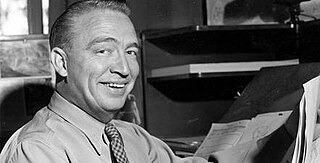
Eric Cleon Larson was an American animator for the Walt Disney Studios starting in 1933, and was one of "Disney's Nine Old Men".

Disney Television Animation (DTVA) is an American animation studio that serves as the television animation production arm of Disney Branded Television, a division of Disney General Entertainment Content, which is a division of Disney Entertainment. The studio was originally established in 1984, by Gary Krisel during the reorganization and subsequent re-incorporation of Disney following the arrival of then CEO Michael Eisner that year.

Joseph Henry Ranft was an American animator, screenwriter, and voice actor. He worked for Pixar Animation Studios and Disney at Walt Disney Animation Studios and Disney Television Animation. His younger brother Jerome Ranft is a sculptor who also worked on several Pixar films.

Gary Trousdale is an American animator, film director, screenwriter and storyboard artist. He is best known for directing films such as Beauty and the Beast (1991), The Hunchback of Notre Dame (1996), and Atlantis: The Lost Empire (2001). He frequently works with Kirk Wise and Don Hahn.

Ronald Francis Clements is an American animator, film director, screenwriter, and film producer. He often collaborates with fellow director John Musker and is best known for writing and directing the Disney films The Great Mouse Detective (1986), The Little Mermaid (1989), Aladdin (1992), Hercules (1997), Treasure Planet (2002), The Princess and the Frog (2009), and Moana (2016).

John Edward Musker is an American animator, film director, screenwriter, and film producer. He often collaborates with fellow director Ron Clements and is best known for writing and directing the Disney films The Great Mouse Detective (1986), The Little Mermaid (1989), Aladdin (1992), Hercules (1997), Treasure Planet (2002), The Princess and the Frog (2009), and Moana (2016).

The Disney Renaissance was a period from 1989 to 1999 during which Walt Disney Feature Animation returned to producing critically and commercially successful animated films. These were mostly musical adaptations of well-known stories, similar to the films produced during the era of Walt Disney from the 1930s to 1960s. The resurgence allowed Disney's animated films to become a powerhouse of successes at the domestic and foreign box office, earning much greater profits than most of the Disney films of previous eras.
Mark Alan Henn is an American animator and film director. His work includes animated characters for Walt Disney Animation Studios films, most notably leading or titular characters and heroines. He served as the lead animator for Ariel in The Little Mermaid (1989), Belle in Beauty and the Beast (1991), Jasmine in Aladdin (1992), young Simba in The Lion King (1994), the title character in Mulan (1998), and Tiana in The Princess and the Frog (2009). He directed the short film John Henry (2000). Henn spent a total of 43 years at Walt Disney Animation Studios, from 1980 until his retirement in 2023.

Waking Sleeping Beauty is a 2009 American documentary film directed by Disney film producer Don Hahn and produced by Hahn and former Disney executive Peter Schneider. The film documents the history of Walt Disney Feature Animation from 1984 to 1994, covering the rise of a period referred to as the Disney Renaissance.
